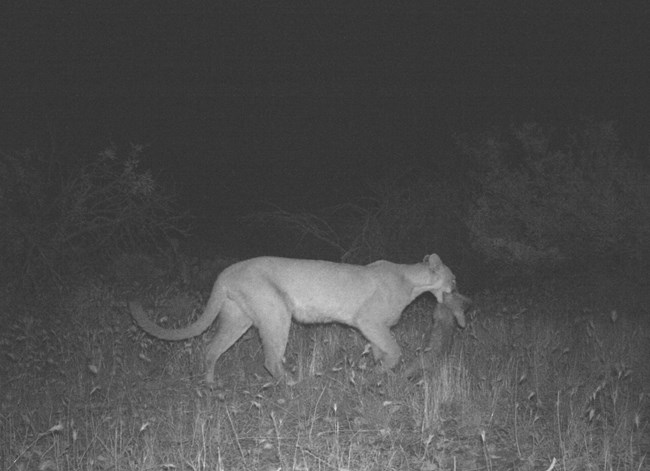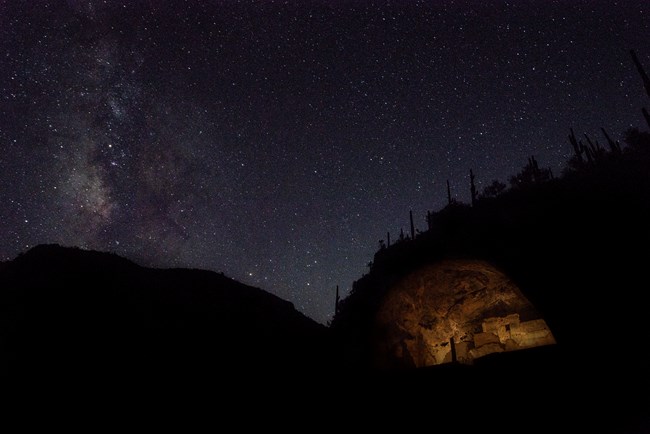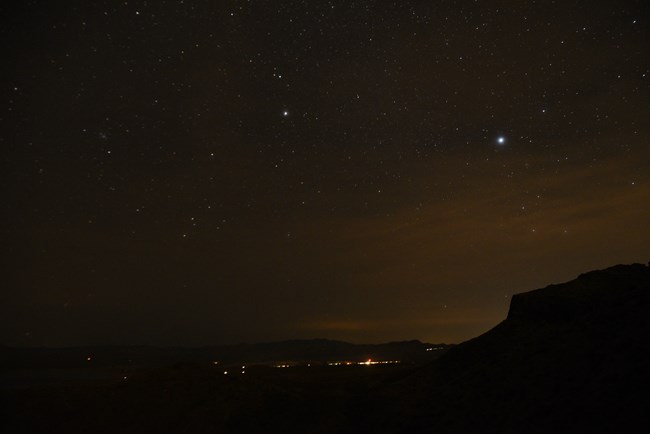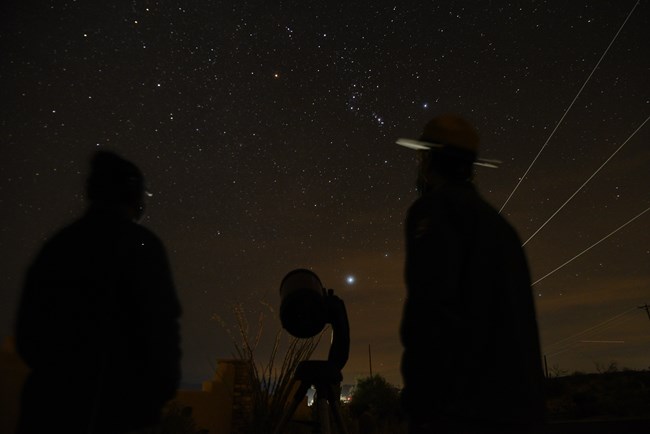
NPS Photo/VIP Jabon Eagar
Designated as an International Dark-Sky Park in 2019, Tonto National Monument helps protect the night skies as they would have appeared to the Salado people 700 years ago. By limiting light pollution in the Monument, Tonto National Monument is not only helping to protect the Night Skies but also the Nocturnal Resources and ultimately the astronomical heritage of this site.

NPS Photo Nocturnal AnimalsMany plants and animals depend on Earth’s daily cycle of light and dark rhythm to govern life-sustaining behaviors such as reproduction, nourishment, sleep and protection from predators.Tonto National Monument is home to many animals that have adapted to the desert environment by being active only at night (nocturnal): These animals include scorpions, ringtails, owls, and 14 species of bats. Many more animals have adapted by being more active around dawn and dusk (crepuscular): javelina, coyote, coatimundi, and mountain lion. Many plants in the desert have adapted to rely on the cool dark nights to survive and reproduce with the help of nocturnal wildlife. The saguaro cactus is one of the plants that relies heavily on a dark night for pollination and reproduction. The saguaro flowers bloom only for a 24-hour period, opening at night and remaining open throughout the following day. With this limited pollination window, the saguaro depends on bats in the evening, as well as bees, birds, and other pollinators during the day, to effectively reproduce. Wildlife and plants benefit us, and need darkness to thrive, as do humans. 
NPS Photo Night Skies and PeopleThe night sky has inspired people for centuries. Until recently, people around the world saw the night skies filled with thousands of stars and the Milky Way.Tonto National Monument protects the history and culture of the Salado people. These ancestral people lived under the same dark sky protected by the Monument today. It’s believed that the Salado used the night sky to navigate extensive trade networks throughout the Southwest in order to trade cotton grown in the local area (Tonto Basin) for pottery and shells from other areas. Observing the night sky was also important for agriculture, since it acted as a guide for tracking the changing seasons.The protection of dark skies at Tonto assists archeologists in studying the relationship the Salado had with the night sky. This communal knowledge of the night sky has been passed down through generations to modern associated tribes. Several associated tribes of Tonto National Monument possess stories of the unique landscape the Salado called home. Just as in the past, stellar observations continue to inspire art, literature, music customs and advocacy. Night sky preservation allows visitors to create relationships to human history; from the time of the Salado to the pioneers, and into the modern era. In addition to these connections with the night skies, dark skies provide us with physical and biological needs and benefits, too. Darkness allows humans to produce melatonin, a hormone which helps us sleep, among other things. 
NPS photo/Barclay Smith Light PollutionThe inappropriate or excessive use of artificial light is known as light pollution and is a side effect of the industrial civilization we live in today. This form of pollution not only impairs our ability to enjoy the night sky, but also adversely affects wildlife, ecosystems, and even our health.
Preserving Night SkiesReducing light pollution is as easy as turning off unnecessary lights, closing a shade, and changing light bulbs at home. The National Park Service recommends a six-step process for evaluating outdoor lighting to reduce your impact.The goal of Tonto National Monument as a International Dark-Sky Park is to preserve the skies and educate the public about light pollution and how they can make a difference. Learn more about how Tonto National Monument is working to protect dark skies as a International Dark-Sky Park, including lighting guidelines and our nomination package, through Tonto National Monument (U.S.) | International Dark-Sky Association. 
NPS Photo/Barclay Smith Night Sky Programs and EventsTonto National Monument offers various Night Sky Programs, typically November through April. For date events and times please check our events calendar. |
Last updated: May 15, 2025
